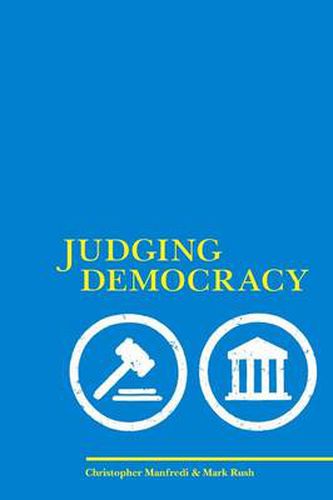Readings Newsletter
Become a Readings Member to make your shopping experience even easier.
Sign in or sign up for free!
You’re not far away from qualifying for FREE standard shipping within Australia
You’ve qualified for FREE standard shipping within Australia
The cart is loading…






In Judging Democracy, Christopher Manfredi and Mark Rush challenge assertions that the Canadian and American Supreme Courts have taken radically different approaches to constitutional interpretation regarding general and democratic rights. Three case studies compare Canadian and American law concerning prisoners’ voting rights, the scope and definition of voting rights, and campaign spending. These examples demonstrate that the two Supreme Courts have engaged in essentially the same debates concerning the franchise, access to the ballot, and the concept of a meaningful vote. They reveal that the American Supreme Court has never been entirely individualistic in its interpretation and protection of constitutional rights and that there are important similarities in the two Supreme Courts’ approaches to constitutional interpretation. Furthermore, the authors demonstrate that an astonishing convergence has occurred in the two courts’ thinking concerning the integrity of the democratic process and the need for the judiciary to monitor legislative attempts to regulate the political process in order to promote or ensure political equality. Growing numbers of justices in both courts are now wary of legislative attempts to cloak laws designed to protect incumbents through electoral reform. Judging Democracy thus points to a new direction not only in judicial review and constitutional interpretation but also in democratic theory.
$9.00 standard shipping within Australia
FREE standard shipping within Australia for orders over $100.00
Express & International shipping calculated at checkout
In Judging Democracy, Christopher Manfredi and Mark Rush challenge assertions that the Canadian and American Supreme Courts have taken radically different approaches to constitutional interpretation regarding general and democratic rights. Three case studies compare Canadian and American law concerning prisoners’ voting rights, the scope and definition of voting rights, and campaign spending. These examples demonstrate that the two Supreme Courts have engaged in essentially the same debates concerning the franchise, access to the ballot, and the concept of a meaningful vote. They reveal that the American Supreme Court has never been entirely individualistic in its interpretation and protection of constitutional rights and that there are important similarities in the two Supreme Courts’ approaches to constitutional interpretation. Furthermore, the authors demonstrate that an astonishing convergence has occurred in the two courts’ thinking concerning the integrity of the democratic process and the need for the judiciary to monitor legislative attempts to regulate the political process in order to promote or ensure political equality. Growing numbers of justices in both courts are now wary of legislative attempts to cloak laws designed to protect incumbents through electoral reform. Judging Democracy thus points to a new direction not only in judicial review and constitutional interpretation but also in democratic theory.